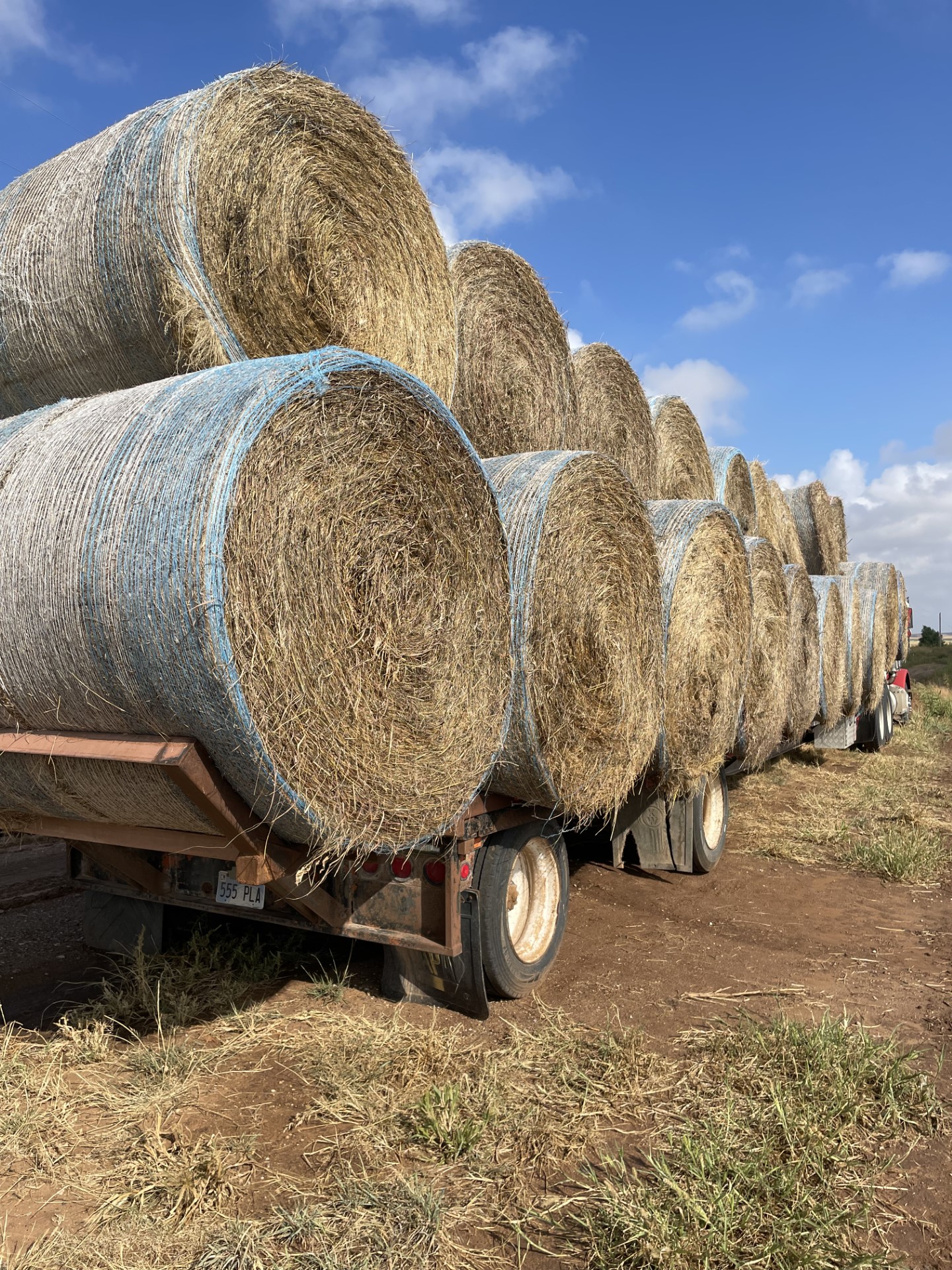State-By-State Hay Summary

Colorado—In the Aug. 22 report, trade activity was moderate on light demand. Stable hay sold steady to $2 higher per bale. According to the NASS Colorado Crop Progress Report for the week ending Aug. 18, alfalfa second cutting is 75% harvested, third cutting 20%. Stored feed supplies were reported as 1% very short, 8% short, 76% adequate, and 15% surplus.
Missouri—In the Aug. 22 report, hay movement remains slow with a lot of hay being offered for sale across the state. Hay prices are mostly steady. The supply of hay is moderate to heavy, and demand is light. All in all, though for late August conditions are not too bad. A few cooler evenings with some heavy dews have helped to keep most areas green. Still some haying going on and corn chopping is taking place in parts of the state.
Nebraska—In the Aug. 22 report, compared to last report, grass hay sold $10 lower on a thin test. Bales of alfalfa in the west sold steady. Dehydrated and sun-cured alfalfa pellets steady. Overall, demand for hay was very light. Scattered rain showers across the state this week. Some more dryness showing up on the Drought Monitor but demand has not picked up for hay in those areas.
Oklahoma—In the Aug. 16 report, compared to the last report, the hay trade is at a standstill. Oklahoma still has a lot of 2023 hay, which is being sold and still stacked in barns. The timely rains and cattle continuing to be sold has made it hard for hay producers to sell hay. Next report will be released Aug. 30.
Texas—In the Aug. 23 report, compared to last report, hay prices are mostly steady across all regions. Hay trade is still pretty limited on moderate demand. Hot and dry conditions dominated the weather pattern over the past two weeks. The USDA reported 46% of the pasture and rangeland in Texas was in poor to very poor condition. As hot and dry conditions persist, producers in the southern region learned that irrigation water will be shut off to the valley. This will likely result in hay producers being limited to only three cuttings this year, instead of the four to five cuttings put up in a normal year. However, tonnage of hay being put up seems to be higher per cutting but quality has suffered with the majority of the hay being marketed in the south as utility to fair. According to the Texas Crop and Weather Report, producers in the north and east are battling Bermuda stem maggots and armyworm infestations in their crops. Next report will be released Sept. 6.
South Dakota—In the Aug. 22 report, compared to last report, demand and movement has been a lot slower than normal, producers are saying it has been quiet.
New Mexico—In the Aug. 23 report, compared to last report, hay is steady demand is light with not much movement. Most hay is being stored in the barns with some moisture there has been more striped and cow hay. According to NASS New Mexico Crop Progress report Aug. 18, alfalfa hay is in the third cutting with 64% complete, fourth cutting 36% and fifth cutting 5% complete. Hay and roughage supplies were reported as 25% very short, 38% short, 34% adequate, and 3% surplus, compared with 23% very short, 41% short, and 36% adequate last week.
Wyoming—In the Aug. 22 report, compared to the last report, all reported hay sales sold steady. Demand was moderate. Some hay staying local with several loads going out of state. Spotty rains showers in different areas of the state. Overall, most of the state remains very dry according to the drought monitor. The only people that really enjoy the dry weather is hay producers as they can bale top quality high testing hay and then reapply water for the next cutting. Some ranchers are starting to procure hay for feeding later this year and through the winter as most winter grazing pastures are looking rather bleak or have been grazed already.
Montana—In the Aug. 23 report, compared to last report, hay sold mostly $10 to $15 lower. New crop hay continues to see slow movement as most producers are seeing light interest and demand. Producers needing to move hay have lowered asking prices in hopes of finding new interest. Rancher to rancher sales are continuing to make an impact on the market as many ranchers are opting to sell new crop hay while feeding old crop hay this winter. Demand for hay is mostly light as heavy supplies continue to be seen. Dairy quality hay is being offered at little to no premium to feeding quality hay. Many ranchers are opting to not cut a third cutting and use fields for grazing this winter. The vast majority of old crop hay has been cleaned up, however some will continue to deliver into the fall. Much of the central portions of the state are finishing up second cutting, while the southern and eastern portions of the state are starting on third.



